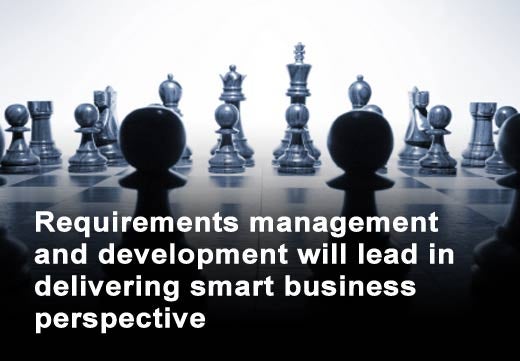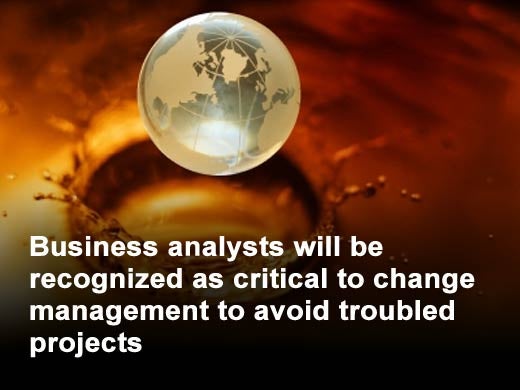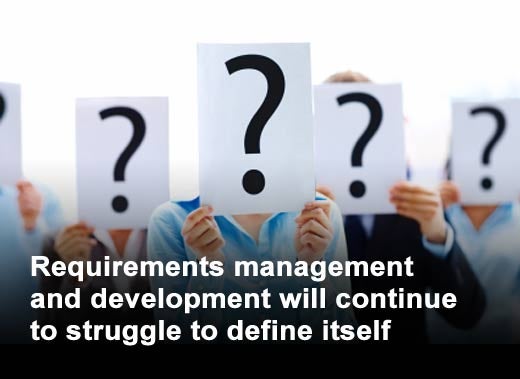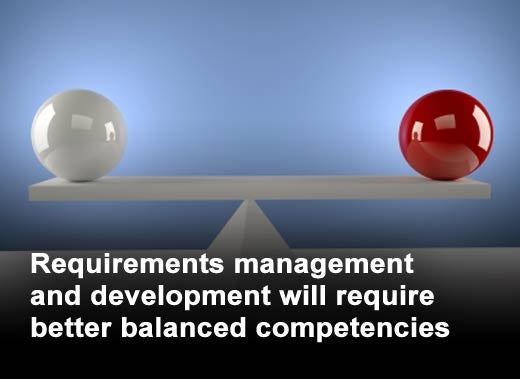To achieve organizational goals within the fast paced, highly demanding business environment of 2011, requirements management and development (RMD) – also known as business analysis – will require a better balance between technical and soft skills, separating the leaders from the rest of the pack. This theme is reflected throughout the 2011 Top 10 trends for RMD, which were determined by a global panel of ESI International senior executives and consultants.
Click through for 10 business analysis trends for 2011, as outlined by ESI International.
In 2011, the business analyst (BA) will place primary focus on business architecture. The BA’s critical thinking ability and unique skills set combination will be relied on to examine the complex, inner workings of the organization through an enterprise-wide lens, not just isolated viewpoints. In particular, enterprise-wide policies, rules and processes will be the focus as organizations strive to remain competitive, increase efficiencies and improve the quality of their goods and services, in order to better appeal to today’s financially sensitive marketplace.
2010 was the proving ground for cloud computing as organizations asked, “Is it worth it?” While a small percentage of organizations said yes, in 2011 we’ll see a significant increase in the implementation of cloud-based computing solutions as the benefits of lower costs of ownership outweigh the uncertainties around access and security. To help ensure smooth transitions to the cloud, organizations will look to business analysis to provide the needed insights from a business architecture perspective.
RMD will lead the reassessment and reevaluation of performance as organizations push hard to improve operational efficiencies. By helping to structure and guide a disciplined, yet flexible approach to meticulous business analysis, RMD will ensure organizations realize the full benefits of key initiatives such as the development of a cloud-based computing infrastructure.
Business Process Modeling Notation (BPMN) will continue to earn recognition and stature as the industry standard by which organizations model their business architecture. This structured, disciplined approach’s syntax and language will be appreciated for its clarity by both technical and business stakeholders.
As the use of agile methods – especially Scrum – continues to explode, the organizations that realize the greatest success will be those that acknowledge the skill sets of both business analysts and project managers, but not in a hierarchal pecking order.
From their enterprise-wide vantage point, business analysts will be relied upon to help executives better understand the impact that change will have on the organization and to help minimize negative impact that results from change. BAs who don’t focus on change management process and managers who ignore BA insights will continue to see more than their fair share of troubled projects.
With breathing room from a slightly improved global economic outlook, many organizations are working toward greater internal organization. For RMD, this will mean a resurgence of centers of excellence and more resources devoted to the evolution of communities of practice to better meet the demands of increased organizational performance.
Over the last three years, many organizations saw a loss of market share as their customers spent less and spent it elsewhere. To accelerate their ability to recapture lost market share, organizations will look to RMD to chart the course for deconstructing and reconstituting the organization – through process modeling, data modeling, measurement and more.
The business analysis profession will continue to gain well-deserved recognition as RMD fosters greater efficiencies and processes across the organization. However, the improvements and innovation it drives that enable new insights and voices will dwarf the BA’s place at the table, leaving the still-maturing RMD role grappling with defining itself. This will be in great contrast to RMD’s expanding criticality in new frameworks such as agile and cloud computing.
The reputation of RMD professionals for soft skills like elicitation and communication has overshadowed their capacity for complex technical skills. Business analysts will step up their game with increased focus on graphical modeling, cost estimates, risk analysis and other measurements that quantifiably prove RMD’s value to the organization.













